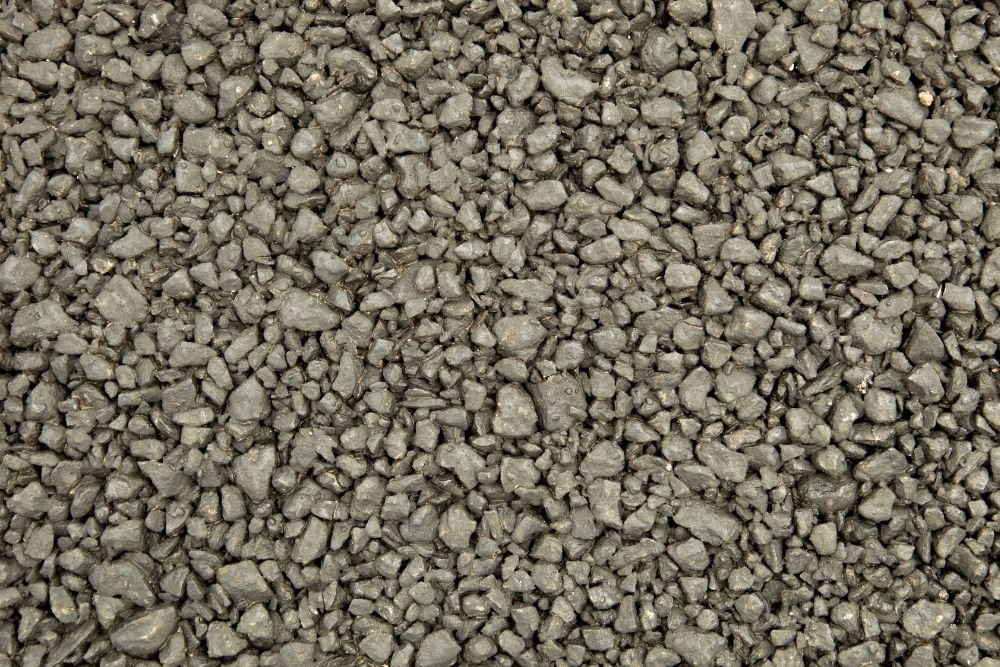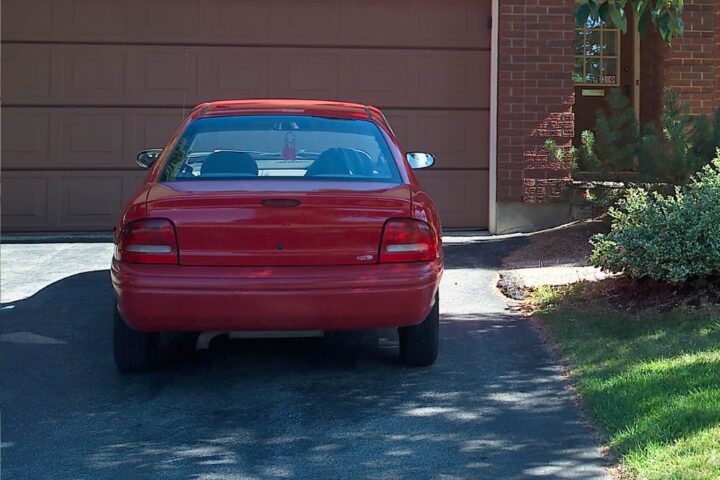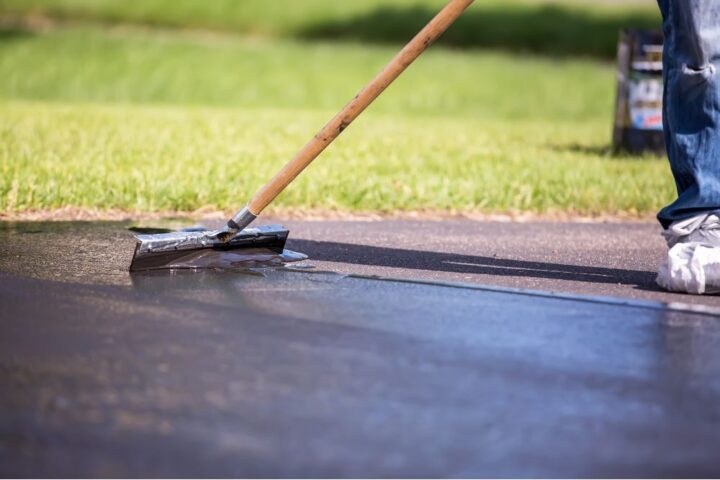Did you know that there is a type of concrete that allows water to pass through it? Permeable concrete, also known as porous or pervious concrete, is a fascinating construction material that has gained popularity for its ability to manage stormwater effectively.
But how does it work? What are its benefits and applications in construction projects? And what challenges does it present?
In this discussion, we will explore the ins and outs of permeable concrete, providing you with a deeper understanding of this innovative solution for water flow management. So, let’s dive in and discover the world of permeable concrete together.
Definition and Composition
Permeable concrete, also known as porous concrete, is a specialised type of concrete designed to allow water to pass through and be absorbed into the ground for effective stormwater management. This unique feature of water absorption sets it apart from traditional concrete. The construction materials used in permeable concrete include 7mm stone set in a grey cement base. The stable matrix is formed by coating the particles with a layer of cement paste. This composition creates a void structure that enhances water permeability, making it ideal for sustainable construction applications.
The environmental impact of permeable concrete is significant. By allowing water to seep into the ground, it filters pollutants from the water, reducing the strain on traditional stormwater infrastructure. This helps to protect and preserve water quality. Additionally, permeable concrete helps to recharge groundwater, which is crucial for maintaining a sustainable water supply.
Furthermore, permeable concrete supports sustainable urban development. By reducing stormwater runoff, it minimises the risk of flooding and erosion. This is particularly important in densely populated areas where urbanisation has led to increased impermeable surfaces. The use of permeable concrete for concrete driveways, in parking areas, light traffic zones, and residential streets not only helps manage stormwater but also contributes to creating more environmentally friendly and liveable communities.
How Permeable Concrete Works
To understand how permeable concrete works, it’s important to grasp its unique design and composition. Permeable concrete is specifically engineered to allow water to pass through and be absorbed into the ground, making it an effective solution for stormwater management. This is achieved through its composition, which includes 7mm stone in a grey cement base. The combination of these materials creates a stable matrix with void structure, allowing water to permeate through the concrete.
The process of water filtration is a key aspect of how permeable concrete works. As water passes through the concrete, it undergoes a natural filtration process. The absence of fines in the composition helps filter out pollutants, ensuring that the water that reaches the ground is cleaner and of higher quality. This not only reduces the risk of flooding but also addresses water quality issues.
Another important aspect to consider is the environmental impact of permeable concrete. By promoting rainwater infiltration and reducing surface runoff, permeable concrete helps to recharge groundwater and maintain a balanced water table. Additionally, its ability to filter pollutants contributes to overall environmental sustainability. These factors make permeable concrete a valuable tool in supporting sustainable urban development.
To summarise, permeable concrete works by allowing water to pass through its unique composition, promoting water filtration, and reducing environmental impact.
Benefits of Permeable Concrete
One of the key advantages of permeable concrete is its ability to effectively manage stormwater. By allowing water to pass through and be absorbed into the ground, it reduces flooding and addresses water quality issues. This has significant environmental impact and provides sustainability benefits. Permeable concrete promotes rainwater infiltration into the ground, which helps replenish groundwater supplies and reduces the strain on traditional stormwater infrastructure. It also supports efficient water flow management in homes, communities, and commercial spaces.
Not only does permeable concrete have environmental benefits, but it’s also cost-efficient. By reducing the risk of runoff and flooding, it decreases the need for expensive stormwater management systems. Additionally, it can help save costs by minimizing the need for elaborate drainage systems in construction projects.
Moreover, permeable concrete contributes to water conservation. Rather than letting rainwater flow off into storm drains, it allows for rainwater to be naturally absorbed into the ground. This helps to recharge local aquifers and maintain a sustainable water supply.
Applications in Construction Projects
Have you ever wondered where permeable concrete is commonly used in construction projects? Permeable concrete has a wide range of applications in various construction projects, offering numerous benefits such as environmental impact, cost analysis, design flexibility, and durability characteristics.
Applications of Permeable Concrete in Construction Projects
| Construction Project | Benefits |
|---|---|
| Car Parks |
|
| Light Traffic Zones |
|
| Residential Streets |
|
| Pedestrian Pathways |
|
Permeable concrete not only helps manage stormwater but also offers design flexibility and durability characteristics. Its composition allows for customization in terms of colour, texture, and pattern, allowing architects and designers to create aesthetically pleasing surfaces. Additionally, permeable concrete exhibits excellent durability, withstanding heavy loads and harsh weather conditions.
When considering construction projects, incorporating permeable concrete can have significant environmental benefits, provide cost-effective solutions, and enhance the overall design and longevity of the project.
Installation and Maintenance of Permeable Concrete
Installing and maintaining permeable concrete requires careful attention to depth requirements, regular cleaning, prompt repairs, and reapplication of sealant to ensure its longevity and effectiveness. Here are some important considerations for the installation and maintenance of permeable concrete:
- Proper Installation: Consultation with engineers is necessary for commercial applications, while domestic driveways require a minimum depth of 100mm. Following these guidelines ensures optimal performance and durability.
- Regular Cleaning: Regular cleaning is essential to prevent clogging and maintain the permeability of permeable concrete surfaces. Removing debris, dirt, and contaminants helps to keep the pores open and allows water to infiltrate effectively.
- Prompt Repairs: Prompt repair of damaged areas is crucial to prevent further deterioration and maintain the integrity of the permeable concrete. Addressing cracks or potholes immediately ensures that the surface remains functional and prevents any potential issues.
- Reapplication of Sealant: Reapplying sealant as needed helps protect permeable concrete from wear and tear, extending its lifespan. The sealant acts as a barrier against staining, moisture penetration, and surface degradation.
- Long-term Durability: Proper installation and regular maintenance contribute to the long-term durability of permeable concrete. When installed and maintained correctly, permeable concrete can withstand heavy loads, resist freeze-thaw cycles, and endure various weather conditions.
Challenges and Considerations in Using Permeable Concrete
Using permeable concrete comes with its own set of challenges and considerations that need to be carefully addressed. Proper sub-base preparation is essential to ensure the structural integrity and water permeability of the permeable concrete. This involves proper compaction techniques and ensuring the sub-base is properly graded and free from debris. Additionally, freeze-thaw protection is a crucial consideration in cold climates to prevent damage to the permeable concrete. By incorporating features such as insulation or using air-entrained concrete, the risk of damage caused by freezing and thawing cycles can be minimised.
Another important consideration is the longevity of the permeable concrete. Regular maintenance, including cleaning and inspection, is essential to prevent clogging and maintain its water permeability. This involves removing any debris or sediment that may accumulate on the surface and periodically checking the condition of the concrete for any signs of deterioration.
To summarise the challenges and considerations in using permeable concrete, the following table highlights the key points:
| Challenges and Considerations |
|---|
| Sub base preparation |
| Freeze-thaw protection |
| Longevity |
| Compaction techniques |
Conclusion
Permeable concrete is a construction material designed to allow water to pass through and be absorbed into the ground. It plays a crucial role in managing stormwater and reducing flooding risks. By promoting rainwater infiltration, permeable concrete addresses water quality concerns and contributes to sustainable urban development. Its unique properties make it an ideal choice for effective water flow management.
If you’re looking for an environmentally friendly solution, permeable concrete is a great option due to its benefits and applications in various construction projects.




